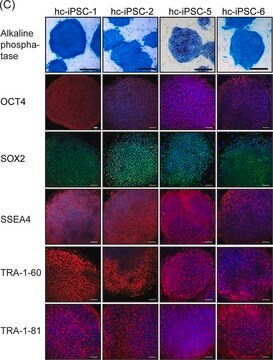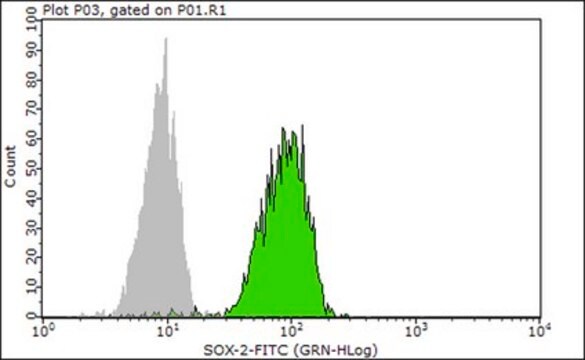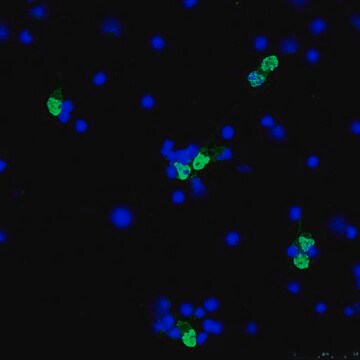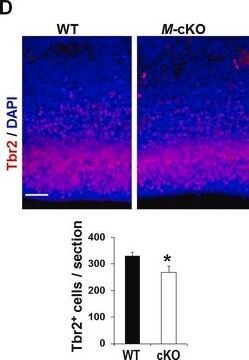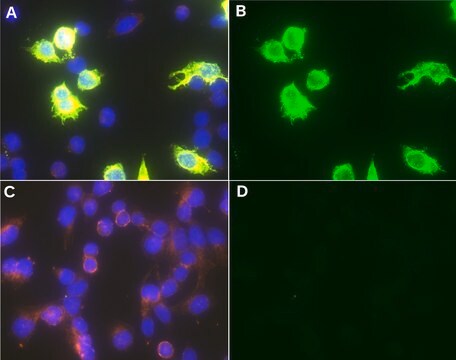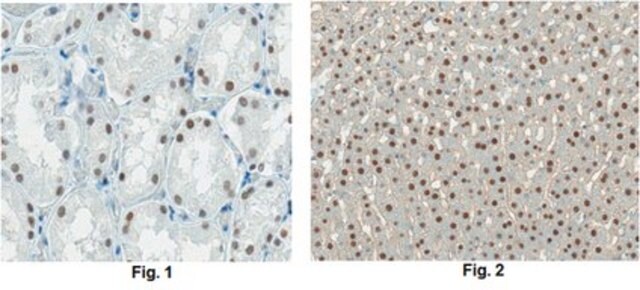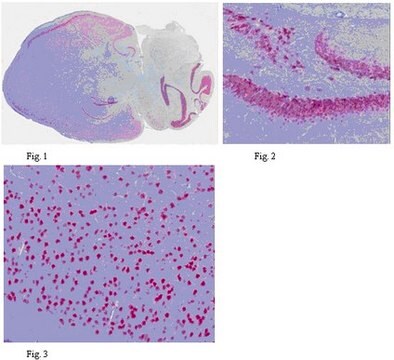FCABS352A4
Milli-Mark® Anti-Nanog-Alexa Fluor 488 Antibody, NT
Milli-Mark®, from rabbit
Synonyme(s) :
Homeobox transcription factor Nanog, Nanog homeobox
About This Item
Produits recommandés
Source biologique
rabbit
Niveau de qualité
Conjugué
ALEXA FLUOR™ 488
Forme d'anticorps
affinity isolated antibody
Type de produit anticorps
primary antibodies
Clone
polyclonal
Espèces réactives
human
Réactivité de l'espèce (prédite par homologie)
mouse (based on 100% sequence homology), rat (based on 100% sequence homology)
Fabricant/nom de marque
Milli-Mark®
Technique(s)
flow cytometry: suitable
Isotype
IgG
Numéro d'accès NCBI
Numéro d'accès UniProt
Conditions d'expédition
wet ice
Modification post-traductionnelle de la cible
unmodified
Informations sur le gène
human ... NANOG(79923)
Description générale
NANOG may be useful in the immunohistochemical diagnosis of tumors. NANOG is expressed in germ cells of the fetus and in some germ cell tumors of the gonads and central nervous system (CNS).
Spécificité
Immunogène
Application
Stem Cell Research
Pluripotent & Early Differentiation
Qualité
Description de la cible
Forme physique
Stockage et stabilité
Remarque sur l'analyse
2102 Ep cells
Informations légales
Clause de non-responsabilité
Vous ne trouvez pas le bon produit ?
Essayez notre Outil de sélection de produits.
Code de la classe de stockage
12 - Non Combustible Liquids
Classe de danger pour l'eau (WGK)
WGK 2
Point d'éclair (°F)
Not applicable
Point d'éclair (°C)
Not applicable
Certificats d'analyse (COA)
Recherchez un Certificats d'analyse (COA) en saisissant le numéro de lot du produit. Les numéros de lot figurent sur l'étiquette du produit après les mots "Lot" ou "Batch".
Déjà en possession de ce produit ?
Retrouvez la documentation relative aux produits que vous avez récemment achetés dans la Bibliothèque de documents.
Notre équipe de scientifiques dispose d'une expérience dans tous les secteurs de la recherche, notamment en sciences de la vie, science des matériaux, synthèse chimique, chromatographie, analyse et dans de nombreux autres domaines..
Contacter notre Service technique